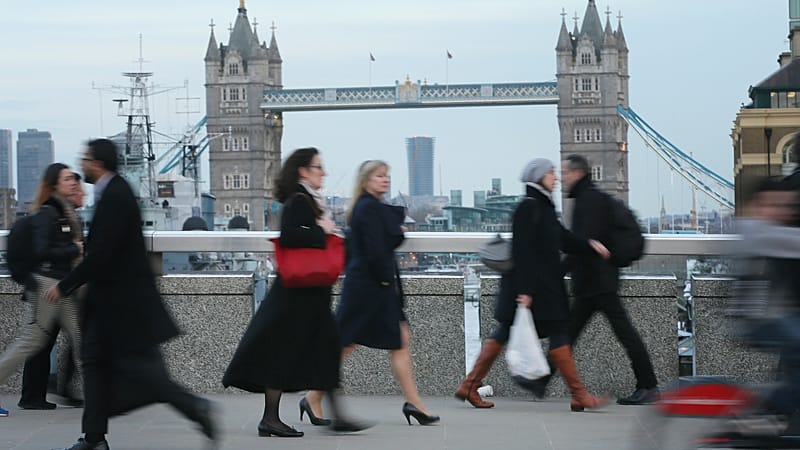Casual is the new corporate: UK offices redefine workwear norms

Workwear is changing across many parts of the world. Such a shift was accelerated by the COVID-19 pandemic, as many of us swapped our office attire for tracksuits and slippers.
Data from global hiring platform Indeed shows that the UK isn't immune to this shift in attitudes. The traditional suit and tie are no longer in style, as many employers move towards more relaxed dress codes. Aside from COVID-19, driving factors include the increasing share of Gen Z and millennials in the workforce, as well as the influence of the tech industry on other occupations.
In July 2025, 3.3% of UK job postings referenced casual dress, more than ten times higher than pre-pandemic figures. Commonly used phrases include 'smart casual' or 'dress for your day'. Mentions rose sharply early in the pandemic, eventually peaking at around 4.0% in early 2023.
Before the pandemic, references to casual dress were present in less than 1% of job listings, and in the first half of 2019, it remained at just 0.2%. Since May 2021, however, it has never fallen below 3%.
“The pandemic triggered widespread changes in how people in the UK work, impacting expectations around where and how we work, but also what we wear,” noted a blog post written by Indeed economists Callam Pickering and Jack Kennedy.
“For employers, a relaxed dress policy can say a lot about workplace culture. And in a competitive hiring landscape, offering flexibility, even in attire, can help attract top talent,” they continued.
Dr. Abbey Bartosiak-Ison, consumer science & analytics professional, emphasised that before the pandemic, many companies were more heavily focused on profit, often putting wellbeing second.
“During the pandemic, the focus shifted dramatically; it had to. With widespread uncertainty and heightened anxiety, employees working from home prioritised health, family, and productivity over appearance,” she told Euronews Business.
A longer-lasting trend
Callam Pickering and Jack Kennedy suggested that while the pandemic helped drive this shift in workplace dress standards, it continues to be supported by wider social and cultural changes.
For instance, millennials and Gen Z are soon to be the two largest generations in the workforce, and many of them now hold positions of power or influence. Compared to their older colleagues, they are more likely to favour a relaxed dress code. Added to this, tech culture, long resistant to traditional office norms, is influencing other industries. Silicon Valley has long been known for its hoodies and trainers — prioritising creativity and a comfortable work environment over tradition.
Casual dress most common in care, marketing and media roles
From 2020 to 2023, job postings that offered at least 20% remote work were more likely to mention casual dress.
And in 2025, expectations around professional attire are still heavily influenced by profession. Personal care and home health, marketing, media and communications, and education and training are all sectors that have high rates of postings mentioning casual dress.
Attitudes around workwear are also influenced by region.
Northern Ireland recorded the highest share of job postings mentioning casual dress, followed by North West England and the East Midlands. London had the lowest share at just 2.3%, with Scotland slightly higher.
Indeed economists noted that London’s lower rate may reflect its job mix. Many roles are in financial services, where formal dress is still expected. In tech, casual dress is so common that it’s rarely mentioned in postings.

